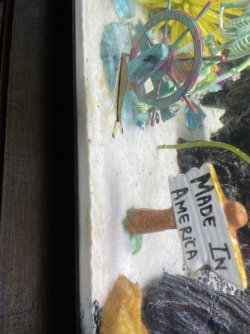More live plants may help, like Colin's already suggested.
I would first try to tackle the algae problem yourself before getting more fish to deal with it.
A few things to take into account:
Bristlenoses are great fish as they are, but it should be noted that they are terrible algae eaters/worker fish. They poo so much that it becomes massively disproportionate to how much they actually clean. And they require a deceivingly large amount of space. They need around 20-30 gallons minimum, despite only growing up to around 4-6 inches in length. They can also live up to 15 years if they're healthy and happy, so they're no short-term worker. They are by no means efficient algae eaters, and are more like greedy free-loaders who leave huge stringy poop all over your tank. And yet I still love them.
Otocinclus are great algae eaters, unlike plecos. However, they do come with risks and you may find your hands full if you're unprepared. They're obsessed with eating algae, so much so that they can quickly become malnourished and starve if they're not fed well. When picking out otocinclus in a shop, you should look for ones that have plump, round bellies. This indicates that they've been well fed, and won't die on you the minute you get them in your tank. You need a lot of algae to keep them occupied and healthy, so you might want to get a good supply of algae before putting them in your tank. On top of all of this, otocinclus are typically wild-caught, so there is a chance that when you no longer have algae for them to eat, they may not care for algae wafers that plecos and other catfish enjoy snacking on. However, I haven't come across anyone personally who has had this issue, so it's definitely not going to be a problem you'll have to deal with for certain. Overall, I'd say they're a good fish and very good as algae eaters. Quite cheap, too.
Amano shrimp are also good as a cleanup crew. They are more comfortable with large patches of moss in the tank, so I would definitely look into getting moss for this tank if you haven't already. Be aware of gourami and cichlids, however, as they are prone to nibbling on, attacking, eating and killing shrimp. Larger shrimp (like amano shrimp) can resist being outright eaten, but can be permanently damaged by attacks from these groups. Baby shrimp are most vulnerable with these tankmates, so I would advise against them if you have cichlids or gourami.
I would consider otos or amano shrimp as main options, but would avoid bristlenoses or any type of pleco as an algae eater.
Hope this helps, sorry if it was quite the long read.




